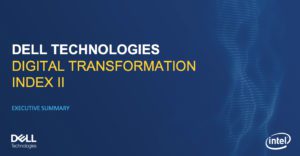
For many industries, the Internet of Things (IoT) promises to increase efficiency while reducing costs. Engineers can manage remote operations through devices and systems that are integrated into the network, and enterprises can optimize operations by analyzing data from distributed sensors, devices, and systems. The end result is greater service and product quality, increased productivity, and lower operational expenses.
Can Additional Investments in More of the Same Security Technology Protect Industrial Operations?
Today’s industrial operations are riddled with vulnerable equipment sheltered behind firewalls or network airgaps. However, these current network protections allow access to every “protected” device the moment an attacker bypasses network security. Additionally, Industrial IoT security enforcement must be adapt to the diverse and decentralized structure of industrial operations, which occur at the industrial edge, sometimes in remote locations, and through disparate groups of devices that vary in make, model, generation, and connectivity. In an automated, IoT world, these security challenges pose a significant barrier to innovation:
- The number of devices that need to be secured is growing faster than IT can manage
- Compromise of any single device puts the entire industrial operation and its data in jeopardy
- Industrial operators want to apply techniques like machine-to-machine cooperation and advanced AI analytics, but lack the confidence to integrate these technologies with legacy systems when it means putting more unprotected devices at risk
- Industrial operators are moving to an IoT future where customers and suppliers live on the same network but with differing privileges and levels of data and equipment access, a situation too dynamic and complex to be handled solely with inflexible network security rules
The reality is that many devices aren’t password protected, or if they are, hold poor passwords that are often lost, stolen, unrotated, and unmanaged. Additionally, unmanaged identities mean IT teams cannot implement and update role-based access to vital systems, devices, and applications. Data protection is also lacking, especially when it comes to end-to-end data integrity, privacy, and access control.
For these reasons, COOs, CISOs and their teams often view digital transformation as more of a security threat than a business opportunity.
Drive Innovation with a New Approach to Security
While the C-suite might view the goals of digital transformation and security as oppositional, emerging security technologies ensure these goals can work in tandem.
Unlike traditional security, which is weakened with every new device connected to the network, distributed consensus-based cybersecurity actually gets stronger as new devices and systems are connected. It also creates an opportunity to share and enforce security policies throughout the network and through each device, meaning that security is available locally right where the operation is deployed. What’s more, tamperproofing each device creates a distinct identity and allows visibility into every machine-to-machine and human-to-machine interaction. This solution, a decentralized, consensus-based platform, can ensure that every machine, application, and interaction is managed and secure, creating an environment where every user is given access to these components only when they possess the proper role-based credentials and policy permissions.
Located at both the device-level and throughout the entire operation, decentralized security platforms defend the operation regardless of distance or connectivity. These universal platforms secure identity, authentication, enrollment, and peer-to-peer data exchange across the network regardless of device characteristics, and can isolate and correct intrusions before they cause long-term damage.
With a decentralized security platform, COOs and their teams can confidently drive digital transformation knowing that their investments and resources are protected.










